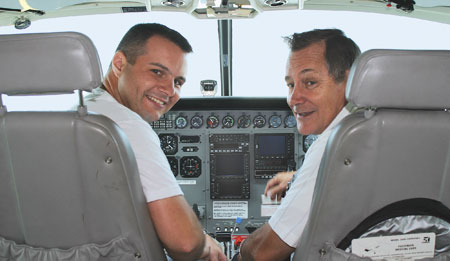INDIAN ARMED FORCES CHIEFS ON OUR RELENTLESS AND FOCUSED PUBLISHING EFFORTS

The insightful articles, inspiring narrations and analytical perspectives presented by the Editorial Team, establish an alluring connect with the reader. My compliments and best wishes to SP Guide Publications.

"Over the past 60 years, the growth of SP Guide Publications has mirrored the rising stature of Indian Navy. Its well-researched and informative magazines on Defence and Aerospace sector have served to shape an educated opinion of our military personnel, policy makers and the public alike. I wish SP's Publication team continued success, fair winds and following seas in all future endeavour!"

Since, its inception in 1964, SP Guide Publications has consistently demonstrated commitment to high-quality journalism in the aerospace and defence sectors, earning a well-deserved reputation as Asia's largest media house in this domain. I wish SP Guide Publications continued success in its pursuit of excellence.
Operations - Expect the Unexpected

Flight crews responsible for the safe operation of corporate aircraft shoulder heavy responsibility. Very often, the company airplane or helicopter will be used to transport chief corporate officers, without whom the organisation would be severely crippled or even collapse. Concern for life and limb aside, there is the overriding need to avoid risk to the corporate structure. Those pilots charged with the safe carriage of the company’s key figures must be well supported.
Corporate flying is quite different from scheduled airline operations, in that business airplanes are not restricted to routes and airports that are used every day. The very utility of company aircraft requires that they be available to operate wherever the business of the corporation requires them to go, often with a frequently-revised schedule to meet sudden demands. This means that the flight crew may have to forego input from a dispatch office, plan its own itinerary, including handling and catering, and seek clearances and fuel sources all by itself.
To be a successful corporate pilot, an individual must enjoy the adventure of beginning a day without knowing exactly where it will end. At the same time, safety dictates that the organisation’s flight department management and corporate board lend support to the go/no-go decisions made in the cockpit. Considering there is no ground assistance in place at some of the airports used and no dispatch author ity oversight, determining the viability of a flight request is often left to the discretion of the pilot. If a trip is declined, the pilot’s decision should not be second-guessed. Turning down too many flights jeopardises the worth of the company plane; yet, pressing on regardless of the hazards is foolish.





